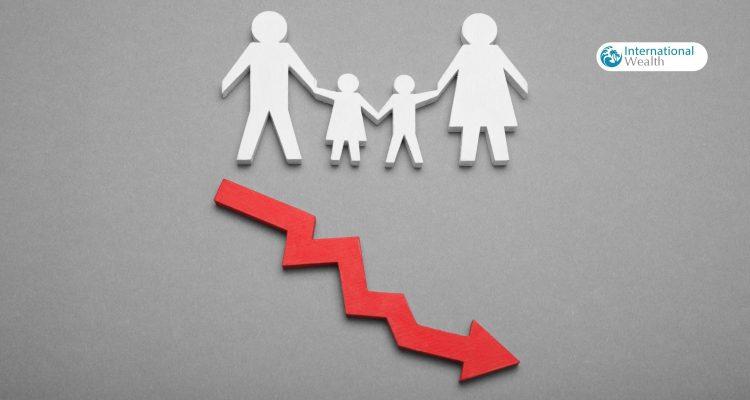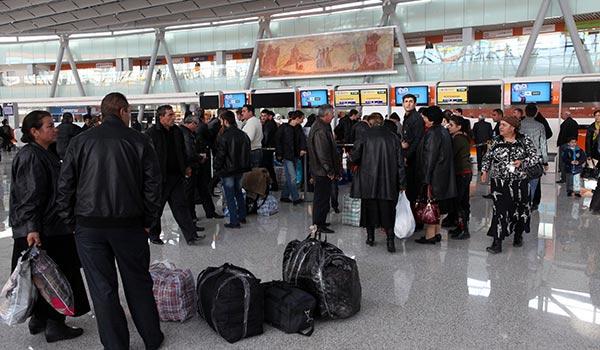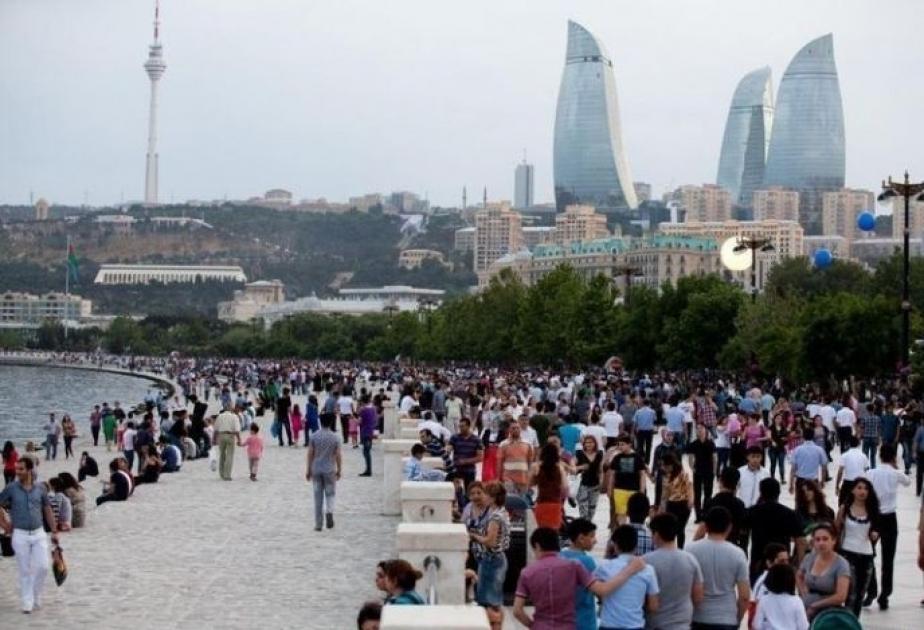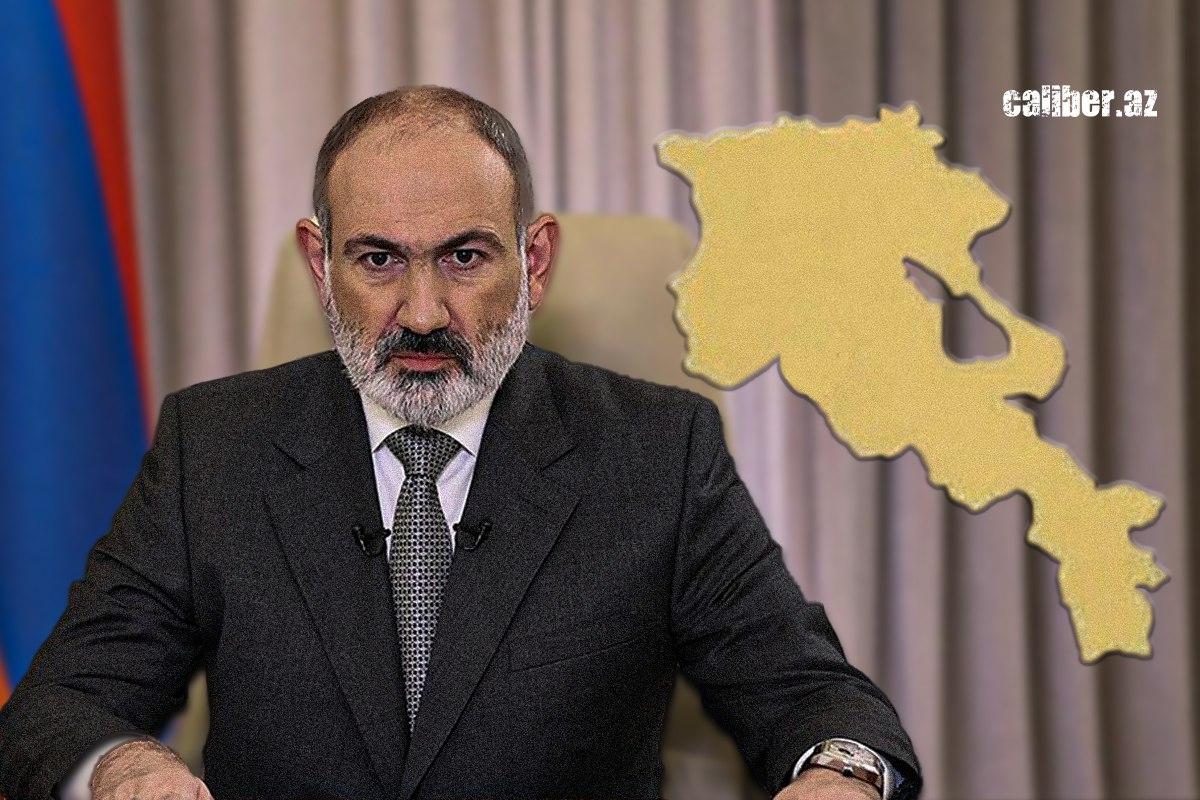Demographic realities: What lies ahead for the world and the South Caucasus? Analysis
Recently, the UN published a forecast on the changes in the global population and that of individual countries. It explains a lot about the global confrontation, during which ageing and declining hegemonic countries resort to military force and economic subjugation to delay the moment when the majority of humanity puts an end to their global dominance. The current self-proclaimed world leaders have no more constructive ideas.
Equally telling are the demographic trends at the regional level. In the South Caucasus, Armenia's population is rapidly declining. Birth rates are about to fall below mortality rates, and mass migration has not ceased since the early 1990s—the bitter fruits of perestroika-era nationalism and territorial expansion. Unfortunately, neither Armenian nor Western leaders are ready to admit that their own policies have led to the extinction and replacement of indigenous peoples, nor are they willing to seek constructive solutions through peaceful cooperation with other countries. Reality will force them to do so.
The West is becoming fearful of migration
The UN Department of Economic and Social Affairs recently published calculations of global population growth, delicately leaving out some scandalous aspects of the problem. No wonder, because they are related to the transformation of the world order and the inevitability of the decline of Western dominance in the world if the current transformation of global politics, economy, culture and communications continues.
It makes sense to voice what the figures of UN demographers' statistics are silently shouting about. The most important global trend is for the world population to peak by the mid-2080s, according to the authors of the report. We will add one more, much more dangerous for the current world system - it is the acceleration of diametrically opposite demographic trends in the key states of the collective West and in the notional BRICS+, the countries that are its opponents or critics. It is expected, in particular, that the population in such states as Japan and Germany will seriously decline, while in Turkey, Pakistan, Iran, India and Brazil it is expected to grow.

The UN, however, believes that the population will also grow in the three Anglo-Saxon countries - the core of the "collective West" - the United States, Canada and Australia. But there is a nuance. Their growth will continue only if migration to these countries continues. And there is no certainty about this. Until now, successful migration to these countries has been linked to their ability, firstly, to suck out the able-bodied population from other countries of the collective West like a hoover, and secondly, to accept a certain number of migrants from other, non-Western countries. The latter could be "diluted" and assimilated thanks to the healthier demographic situation among the Anglo-Saxon population in the US or Australia, as well as the reception of migrants from other states of the "collective West" or Westernised societies of Eastern Europe and similar regions.

Both opportunities for the Anglo-Saxon countries in the near future will be greatly reduced or have already been reduced. After all, the bulk of the population of other countries of the "collective West" ready for overseas migration has already been exhausted - they are all engulfed in a demographic crisis. And this means not only the disappearance of the most desirable source of new citizens for the American or, say, Australian establishment. It means that there is no one to "dilute" immigrants from non-Western countries - hence the roots of the Western population's current fears about Latin Americans allegedly flooding the US, or about the Muslim "quiet conquest" of the EU.
All these are, of course, slow processes. Thanks to this peculiarity, the world's elites manage to hide their responsibility for this demographic replacement, due to the flawed socio-economic model they have built, the over-exploitation of immigrants and the wage dumping made possible by importing cheap and trained labour at the expense of less developed countries. When the consequences of this model - the extinction of the indigenous population, the destruction of local culture and the decline in living standards - eventually become apparent, the elite-controlled media embrace racist motives and pit people against people.
Russian-Ukrainian war: people continue to die
In some cases, demographic catastrophes occur at a much more rapid pace. They are also directly related to global political conflicts and determine their outcome. The situation in Ukraine is an unfortunate example. A week ago, Ella Libanova, director of the Institute of Demography at the Ukrainian Academy of Sciences, said that even in the most optimistic scenario, in 10 years the population of Ukraine will be only 35 million. We recall that at the time of the collapse of the USSR, there were 52 million Ukrainians, and at the beginning of the Russian-Ukrainian war two years ago, there were 41 million.
However, 35 million is also an unrealistic forecast. The analysis presented by the non-governmental Ukrainian Institute for the Future seems more adequate. A year ago, it calculated the actual population of Ukraine at approximately 29 million people. That is, Ukraine lost more than 8.5 million during the first year of the war! Moreover, they counted military losses at a completely fantastic minimum, actually taking into account only those who had left.
As for those who left, we can say with certainty that the absolute majority of them will not return to their homeland to live there. Even if it is at least minimally rebuilt, which is also unlikely. This is evidenced by the examples of almost all modern conflicts of this kind - from Afghanistan to Syria or even the really rebuilt and quite prosperous Northern Iraq. Western support for Ukraine will end as soon as Kyiv loses its ability to exsanguinate Russia or the West loses interest in exsanguination - say, by switching to China.
Since then, another year of war has passed. Ukraine's losses were increasing without slowing down - recently, the news about the opening of branches of the National War Memorial of Ukraine in all regions of the country went unnoticed. The country was further destroyed, and those who left were settling in new places. But Ukraine continues to fight - increasingly relying on Western support.
In other words, the current demographic situation already predetermines further possible scenarios of the Russian-Ukrainian war that Kyiv and NATO have in mind. The conflict will either have to be curtailed, for example, through the notorious freeze, or the EU-NATO countries need to gradually enter the war themselves, since Ukraine itself has already been knocked out and destroyed.
Armenia: two to three million "missing" citizens
Demographic forecasts also eloquently indicate the prospects for the development of the situation in the South Caucasus. While watching the Armenian authorities' desperate attempts to find an external force to transfer a de facto part of sovereignty to it, one must take into account the fact that the Yerevan elites realise that Armenian statehood is becoming increasingly shaky as a result of demographic processes. Armenians are dying out and leaving, abandoning the state built by Armenian nationalists with their perestroika dreams of territorial expansion and the realities of ethnic cleansing, banditry and corruption.

Of course, last year the permanent population of Armenia seemed to have even slightly increased - by 53,000 people - and, at the beginning of the year, there were 2,990,000 "registered" people living in this country. But already here we see the first unpleasant fact for Pashinyan and his team. It turns out that the population grew by only fifty thousand, despite the arrival, according to Armenian official data, of "101,848" former residents from the territories controlled by the Karabakh separatists! The natural population decline and the departure of Armenians who had just moved to Armenia from Azerbaijan within just a couple of months reduced the increase due to migrants by exactly half. In April, even representatives of the Karabakh junta claimed that about fifteen thousand migrants had already left Armenia, mostly for the south of the Russian Federation, and many of those who remained were waiting for their children to finish the school year so that they could do the same. In March, the Armenian Interior Ministry said that only a few of the more than 79,000 displaced had been registered, and only 1,437 had applied for citizenship!
In addition, registered Armenian citizens, especially able-bodied ones, sometimes de facto live and work in other countries. This is also a problem for Yerevan, which can be seen in the balance of entry and exit in Armenia, which became negative again last year: -29,494 people, and even worse (-36,512 people) if only citizens are taken into account. This has been the case practically all the years of independence, except for 2022, when, thanks to re-locations from the Russian Federation, it became positive (+38,732).

Let us recall that at the very end of the Soviet era, Armenia's population was 3,574,000. And, as Armenian experts lament, "under conditions of stable demographic development, the population of Armenia [now] should have been 5.5-6 million", but it is only 2.9 million! For comparison, Azerbaijan's population has grown from 7.21 million in 1991 to 10.18 million at present.
The decline in Armenia's population is directly related to the Armenian nationalist movement aimed at expansion in the region. Against the backdrop of territorial conquests, the country plunged into the deepest socio-economic crisis and found itself in international isolation. Consequently, the population began to decline, first as a result of mass emigration. At one time, the head of the State Migration Service (SMS), Gagik Yeganyan, admitted: "Since Armenia's independence, emigration from the country has never stopped." Yeganyan admitted that the authorities concealed the scale of flight from Armenia: "We call 1992-1994 the years of mass emigration. In three years the reduction of the population due to emigration was about 600,000. 1995-2001 is the second stage, stabilisation, but still relatively high volumes of emigration. During these seven years the loss of population totalled 250,000 people".
In all subsequent years, including under Pashinyan, emigration has hovered around the 30,000 per year mark: based on the entry-exit figures, 291,327 people have left Armenia in the last ten years.
And soon the consequences of migration were exacerbated by a drop in birth rates. Since 2018, one after another, the regions of Armenia have started to record an excess of mortality over birth rate. The decline in the birth rate is also a direct consequence of the so-called "myatsum" of the Gorbachev times. According to Armenian demographers, the decline in the birth rate began when those born in the 1990s entered the marriageable age, "who are 40 per cent less than those born in the 1980s, not counting the fact that 20-25 per cent of this generation are currently absent from Armenia due to emigration". Armenian demographers have long estimated that by next year, deaths will exceed births in all of Armenia.
Even Indians are fleeing
Only in recent years has the Armenian government achieved some slowdown in the rate of population decline through an influx of citizens from other countries - among them some 110,000 Russian re-locates and workers from India. Yerevan has made it easier to issue visas to Indians since 2017, but they have been actively travelling to Armenia since somewhere around the summer of 2022. By the beginning of this year, according to the estimation (nobody knows for sure) of the former Minister of Economy Vahan Kerobyan, 20,000-30,000 Indians had settled in the country. However, they do not stay either - some leave at the first opportunity, facing merciless exploitation, while others initially go to get a visa to the EU through an Armenian residence permit or find another way to go to the West.
This is not surprising - until a peaceful settlement with Azerbaijan is reached, the Republic of Armenia has no future, no matter how many tales the visiting Russian IT specialists tell about how this country will become a "second Singapore". In the absence of peace, the Armenians themselves do not believe in such Manila projects. In April this year, Prime Minister Pashinyan, speaking in the town of Gavar, admitted that it was the lack of peace with neighbours that had caused many to leave the country. According to him, "the peace agenda is to prevent emigration .... the war is largely related to emigration, many people emigrated from Armenia precisely because of the lack of peace".
However, Pashinyan and his team have one answer to "seven woes - one answer" and that answer is to go to the West, which will allegedly solve the problems of the economy, allow them to ignore peace with neighbours and miraculously make Armenia prosperous. But this is a huge misconception. The desire of Armenian elites to join the West on any terms may turn out to be a guaranteed path to further depletion of the country's human resources. As the history of the last decades shows, this has happened to many countries that have found themselves in the distant orbit of the West. According to the authors of the above-mentioned UN report, the record population decline in peaceful conditions in the next thirty years - by 14 per cent - will occur in the states from which the able-bodied population leaves en masse for the wealthy countries of the "old West" - Albania, Bosnia, Lithuania, Moldova, Puerto Rico. From the latter go to the USA, from the rest - to Western Europe.

The only realistic solution for Armenia would be peace with its neighbours, renouncing revanchism and participating in the restoration of the historical unity of the South Caucasus. This would revitalise the economy, build an effective state and stop the process of extinction and emigration. Other cunning schemes involving Armenia in the intrigues of the superpowers in the region have chances to create problems in the region, but will in no way help Armenians to survive in the real Armenia.
To summarise, it can be stated that despite all technological innovations, machines will not replace living people. And demographic trends indicate the real meaning and motives of political processes, as well as allow us to make realistic forecasts about the future of the world and its regions. The militarisation of the superpowers of the West and the East, the toughening of the fight against migrants, which even the seemingly liberal countries of the collective West are openly deploying, means that they are panic-stricken by the demographic advantage and have no constructive ideas on how to fruitfully redistribute resources and organise the creative energy of the growing humanity.
The problem is not the lack of resources on the planet - this year alone NATO countries will allocate $380 billion for military expenditures - enough money to rid the planet immediately of hunger and chronic malnutrition, which are increasing as a result of climate change caused by the predatory and selfish economic policies of wealthy countries! But to do so, the world establishment would have to abandon imperialist bickering and chauvinism. However, the example of a single region of the South Caucasus shows that even the leadership of the small and constantly shrinking Republic of Armenia finds it difficult to abandon such ideas and nationalist revanchism and to see in dynamically growing Azerbaijan and other neighbouring countries not a threat, but a chance for its own revival and development.
The views and opinions expressed by guest columnists in their op-eds may differ from and do not necessarily reflect the views of the editorial staff.








